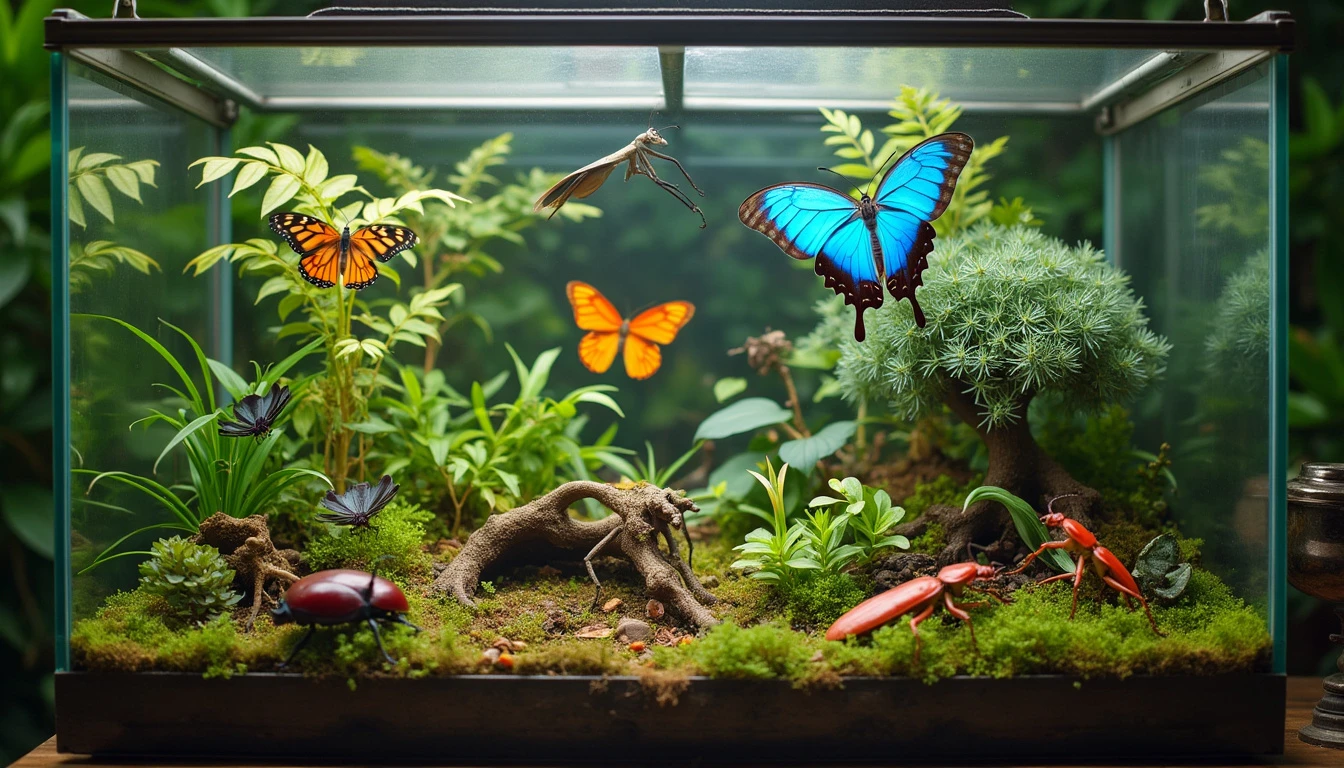Terrariums are fascinating ecosystems enclosed in glass, blending the art of gardening with the science of ecology. While plants are common in terrariums, incorporating exotic insects can add dynamic life and interactions. This guide explores in-depth the inclusion of exotic insects in terrariums, focusing on selection, care, and the unique benefits they bring.
Selecting the Right Insects for Your Terrarium
Choosing the right insects is crucial for maintaining a healthy terrarium. Here’s a closer look at some top choices for different terrarium environments, their care requirements, lifespan, and challenges:
1. Tropical Terrariums
- Butterflies (e.g., Blue Morpho, Monarch)
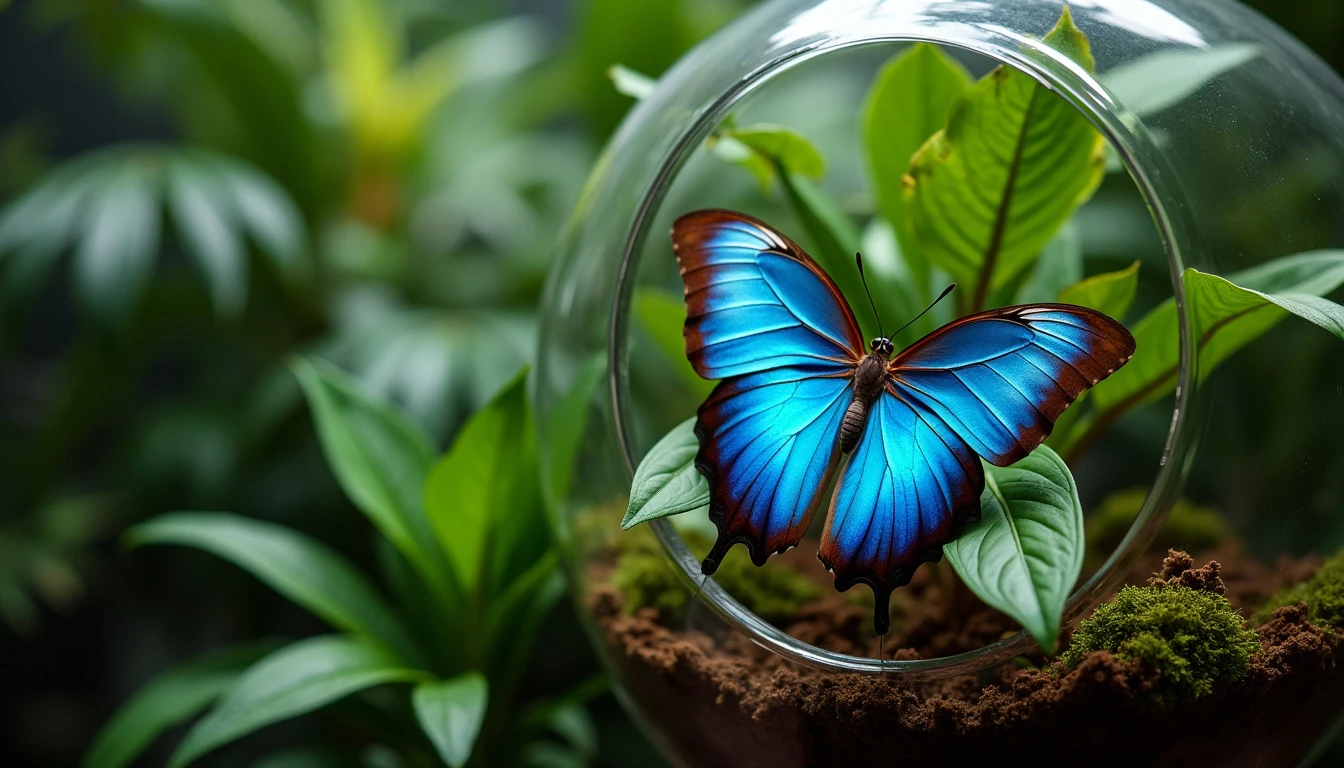
- Care Requirements: Require nectar plants and specific larval host plants.
- Lifespan: Typically 2 to 4 weeks for adults.
- Challenges: Sensitive to temperature and humidity; need space to fly.
- Praying Mantises
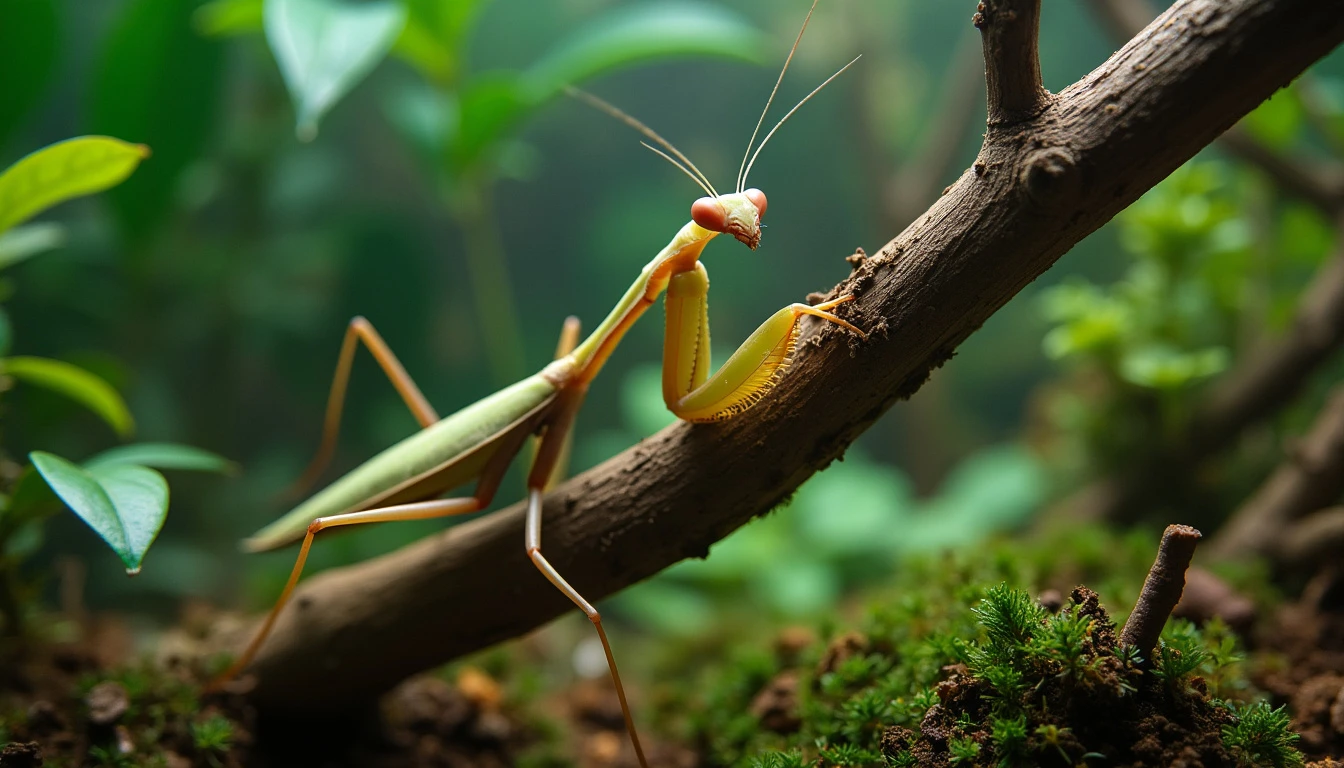
- Care Requirements: Need live feed (flies, crickets), and vegetation for hiding.
- Lifespan: Around 12 months.
- Challenges: Can become territorial and may require separate spaces if multiple are kept.
2. Desert Terrariums
- Beetles (e.g., Tiger Beetles)

- Care Requirements: Minimal; occasional feed of small insects and dry conditions.
- Lifespan: Usually 1 to 2 years.
- Challenges: Less active, may burrow and be unseen for periods.
- Ants (e.g., Harvester Ants)
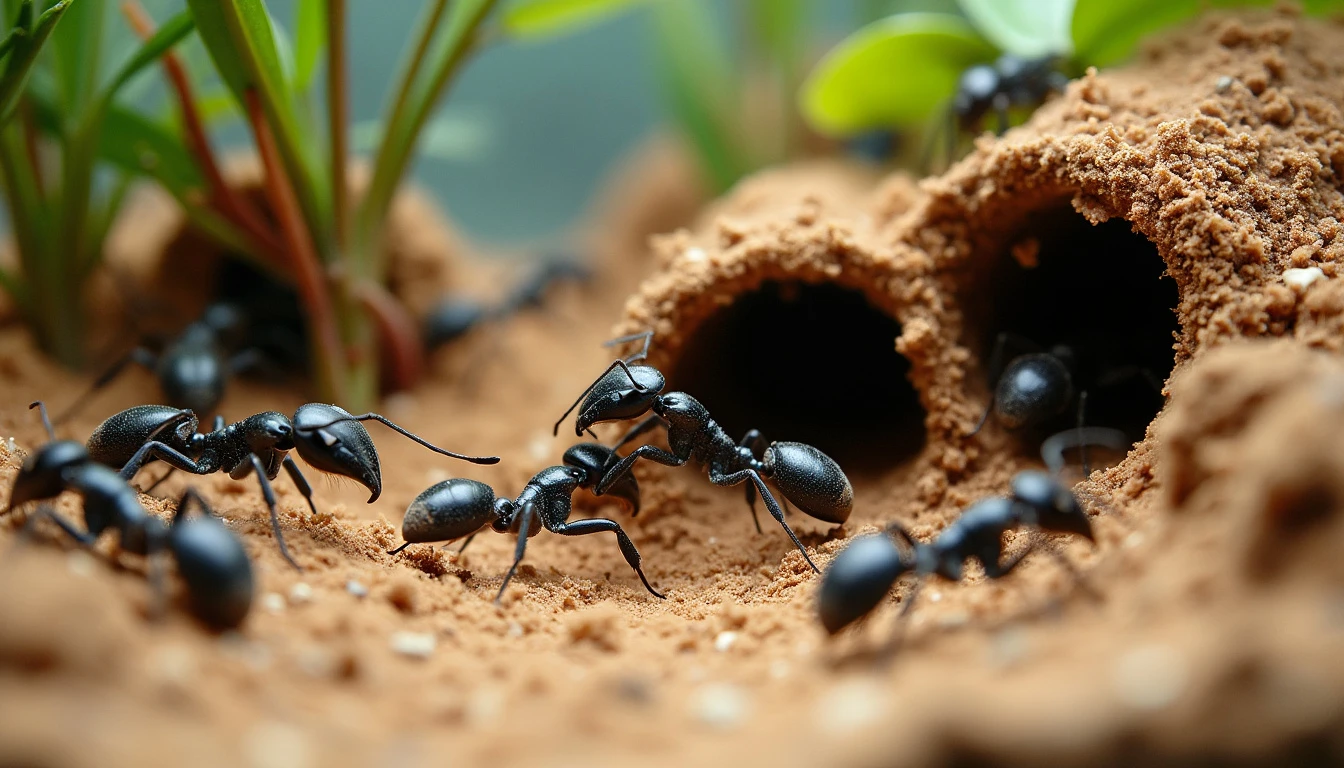
- Care Requirements: Need sandy substrate for tunneling, regular feeding.
- Lifespan: Workers live about a few months, queens can live for years.
- Challenges: Colony can grow large; managing space and waste is crucial.
3. Temperate Terrariums
- Stick Insects
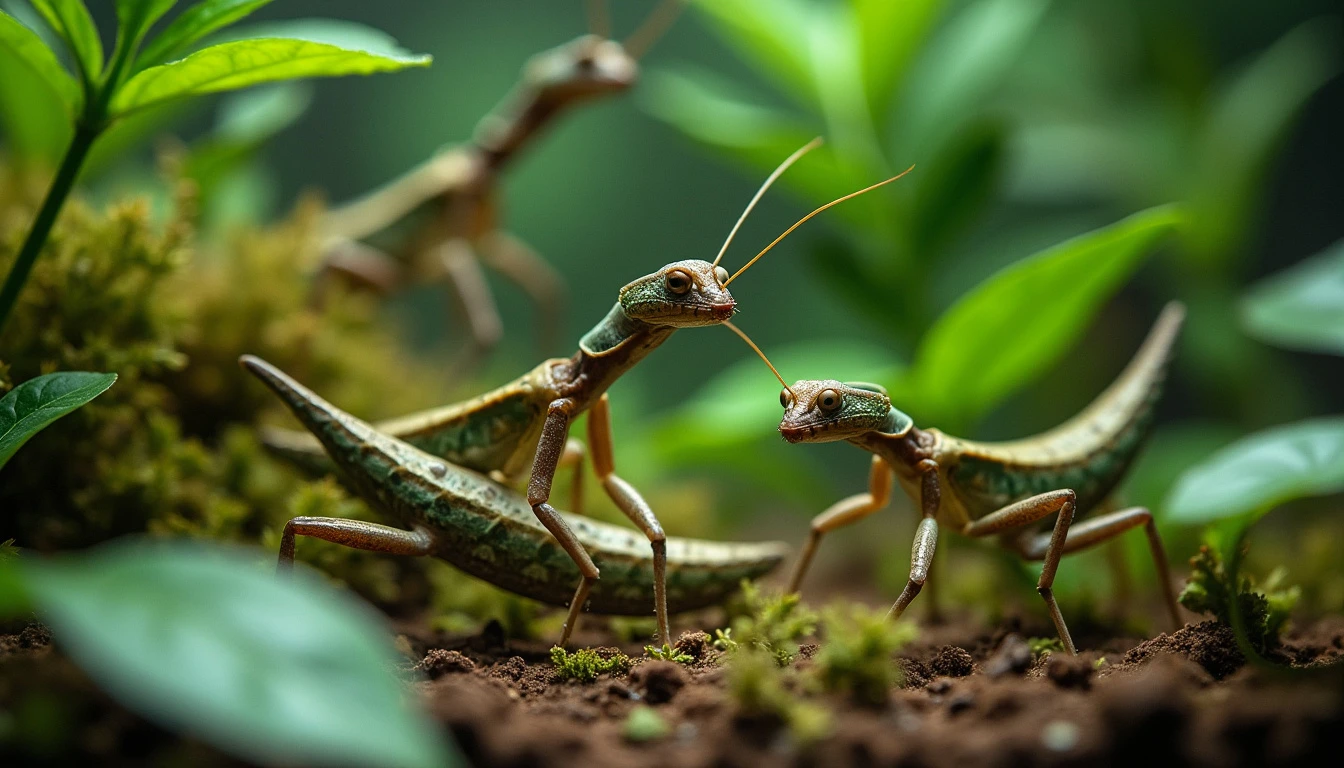
- Care Requirements: Require fresh foliage, misting for humidity.
- Lifespan: About a year.
- Challenges: Fragile; handling must be done with care.
- Ladybugs
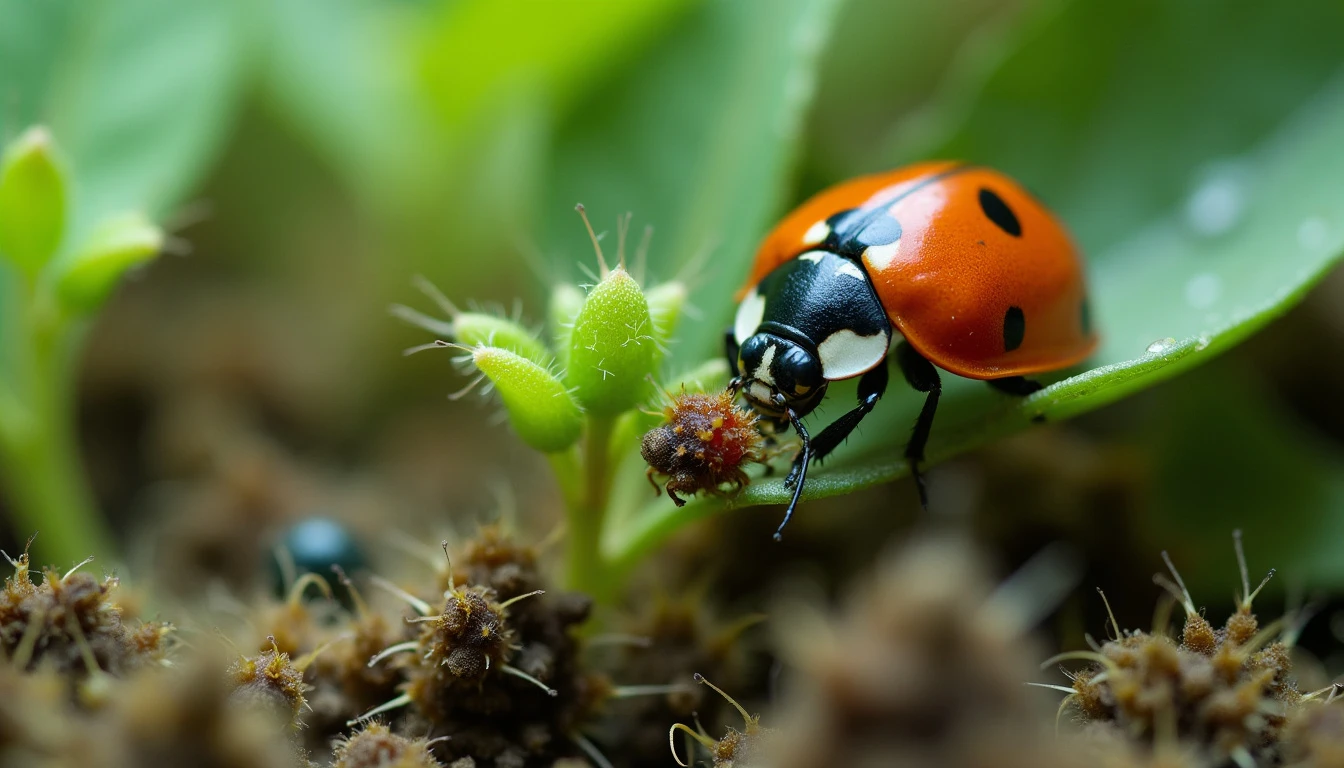
- Care Requirements: Aphids or similar small insects for food, plants for habitat.
- Lifespan: 2 to 3 years in captivity.
- Challenges: Can be prone to fungal infections if conditions are too damp.
Expanded Case Study: The Butterfly Effect in a Tropical Terrarium
A detailed case study involving Blue Morpho butterflies in a large tropical terrarium showed significant ecological benefits:
- Plant Growth: The presence of butterflies helped increase plant pollination. Measurable growth in plant biomass was recorded, with a 20% increase in flowering plant health and density within six months.
- Ecosystem Dynamics: Butterflies contributed to greater plant diversity and health through their pollination activities.
Addressing Challenges: Disease Prevention, Ethical Considerations, and Responsible Sourcing
- Disease Prevention: Regular monitoring for signs of illness, maintaining clean terrarium conditions, and quarantining new insects before introduction can help prevent disease spread.
- Ethical Considerations: It’s crucial to source insects from reputable breeders or suppliers who comply with local wildlife regulations to avoid impacting native populations.
- Responsible Sourcing: Ensure that the insects are captive-bred rather than wild-caught to minimize ecological impact and support sustainable practices.
Conclusion
Incorporating exotic insects into your terrarium isn’t just about adding beauty; it’s about creating a balanced ecosystem that mirrors nature. By understanding and catering to the specific needs of each insect, ensuring ethical sourcing, and preparing for potential challenges, your terrarium can become a thriving microcosm of life that offers endless educational and aesthetic rewards.
